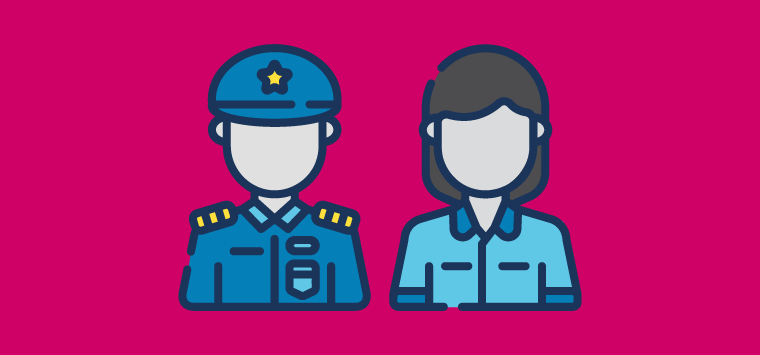Lone Worker Safety and Compliance
Security and cleaning contractors typically employ lone workers who are exposed to an increased risk of workplace violence and accidents without others present. Because of that threat, employers are required to take lone worker safety measures to remain compliant.
Within the security industry, guards are vulnerable to altered behavior from the public via crimes or intimidation. At the same time, cleaners face potential accidents, such as a slip and fall or exposure to hazardous materials or chemicals. The stressful nature of working in isolation can lead to negative health conditions and cause increased employee turnover.
Protecting lone workers involves committing to on-site safety practices by systematically addressing risks. Safety audits and hazard assessments can mitigate risks and ultimately reduce turnover – and integrated software can support these efforts.
Lone worker safety regulations and risk assessment
The Occupational Safety and Health Administration (OSHA) requires that employers provide a safe work environment for their employees that is “free from recognized hazards” that could cause death or serious physical harm, according to the General Duty Clause, which binds private employers to comply with occupational safety and health standards.
Although recognizing and addressing hazards is required by law, OSHA only provides general guidelines on how to comply. Typically, employers are considered to violate the General Duty Clause if:
- Employers failed to keep the workplace free of hazards
- There was a recognized hazard
- The hazard caused or would likely cause death or serious physical harm
- There was a feasible and practical method to correct the risk
Conducting a workplace hazard assessment for lone workers can start with implementing workplace safety procedures. Supervisors can customize procedures to the on-site risks isolated workers face. Then, managers can ensure all workers receive proper training and schedule refresher training.
Establish a regular check-in procedure for lone workers, which may include using mobile tools for real-time communication. Panic buttons and locked drop safes can be installed. Employers can also schedule high-risk tasks when another worker is present. Additionally, providing protective clothing, barriers and escape routes may also promote safety.
To ensure visibility, install security cameras or utilize tracking devices to improve lone worker monitoring. Establish clear visibility and support on-site understanding of all possible entrances and exits. Additionally, make sure workers have access to locks to prevent unauthorized entry.
Evaluating the workplace design, physical arrangement, and materials to reduce risks is another action employers can take. Ensure the site has well-lit interiors and exteriors, and practice an emergency action plan regularly. Investigate incidents promptly, record near misses and revise procedures. Finally, seek input from employees to address work-related issues effectively.
Instilling workplace safety with software tools
Software tools can support a lone worker safety policy by aiding employers with risk assessment, location monitoring, hazard identification and creating an emergency response plan to instill workplace safety.
For example, a duress feature allows users to send a duress message to a supervisor if an emergency occurs. When selected, a screen displays a warning message. It will state that the lone worker is facing danger and to contact the police or emergency services immediately.
Additionally, an integrated ERP solution equipped with a periodic checks tool establishes when employees must check into a system at a customer-configurable time (i.e. every hour) allowing employees to confirm they are safe while working alone. Supervisors in the field can be alerted if there are any missed check-ins. Once alerted, they may follow up if workers need support.
Integrated software with a compliance code feature can be used to ensure that only employees trained to work a site can be scheduled for a particular site. Contractors can use this feature to make sure that only guards with firearm training are scheduled for a particular site. Or, it can help make sure that cleaners with emergency spill training are scheduled to work in a hospital.
A content management function lets supervisors digitally share safety materials with employees in an easy-to-access format available to lone workers with mobile phones. This feature encourages the promotion of general safety guidance, identifying hazards and detailing roles and responsibilities.
Similarly, software with a quality audits feature allows companies to perform lone working risk assessments by assigning safety managers who can visit different sites to perform a specific evaluation, rather than relying on job supervisors to regularly audit.
Software integration and lone worker safety
Implementing a successful safety management program to protect lone workers involves assessing threats, addressing hazards and mitigating risks. With an integrated workforce management system, companies can better systematically address safety risks by performing audits and hazard assessments to keep employees safe, which could decrease turnover.
To learn more about how an integrated system can help instill safety among your distributed workers, schedule a demo with one of our experts.
